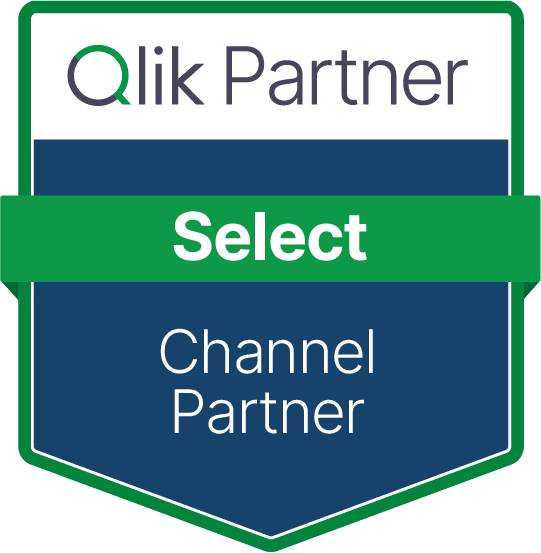Rupp ensures full control over costs, quantities and sales - with Qlik
RUPP AG
Industry
food industry
Department
Executive Board, Management, Controlling, Sales
Region
Hörbranz, Austria
"By using Qlik, we are no longer limited to cost controlling costs at an aggregate level, but have much greater granularity and transparency."
Markus Dürnberger, responsible for cross-company finance projects, Rupp AG
The customer
The products of cheese producer Rupp AG have long since conquered markets outside of Austria in the company's 100-year history: the traditional Vorarlberg company exports its cheese specialities to 65 countries. 90 per cent of annual production - 53,000 tonnes in 2016 - is exported. The success of Rupp's expansion strategy is demonstrated by a workforce that now numbers around 600 employees and seven branches in Austria, Germany, the Czech Republic, France, China and Dubai.
Initial situation
The IT infrastructure has also grown: due to company takeovers, Rupp uses various ERP solutions, including SAP, Sage and Eloquenz. In connection with this, the reporting requirements have also grown.
"For us as a manufacturing company, it is very important to know turnover, quantities and costs precisely," explains Markus Dürnberger, responsible for cross-company financial projects at Rupp AG. "Since we use different ERP solutions at our various locations, we were looking for a more efficient way to evaluate data across locations and systems. In the past, we were able to access only the SAP data from the head office in Hörbranz via an OLAP-based solution."
Solution
The challenge was to find a business intelligence solution that was not cube-based, but memory-based - and thus made it possible to load data from any source into the working memory in a fully indexed form and to enable data navigation in all directions.
The choice fell on the data analysis solution Qlik: its in-memory data model enables the integrated presentation of information in the form of dashboards, ad-hoc analyses and reports in one solution. Information can be analysed at both aggregated and detailed levels. The time-consuming and costly creation of multidimensional OLAP cubes becomes completely unnecessary. Relationships between data sets are created automatically in QlikView.
Since the data is kept in the working memory, calculations can be carried out at lightning speed even when many users are accessing the data at the same time.
Rupp placed the realisation of the project in the experienced hands of ppmc AG. The IT service provider from Liechtenstein specialises in customised business intelligence solutions for medium-sized companies. The focus is on the development of Qlik-based analysis and reporting applications. The certified Qlik solution provider is not only very familiar with the development level of the Qlik product family, but also has extensive technological know-how on a wide range of ERP systems as well as sound business management knowledge thanks to many years of project experience. Dürnberger found that these were the best prerequisites for implementing the project at Rupp professionally and successfully.
His confidence was not disappointed: “Within four weeks after our first meeting, Qlik was implemented and a first turnover and cost application for our two secondary locations in Lindenberg was available for productive use. Data from SAP and Eloquence formed the basis. The actual implementation and programming only took a little more than a week, which is due to ppmc’s high technical competence.” Access is via a central application that offers information of varying granularity on several tabs, as well as the possibility of ad-hoc analyses. Access rights are restricted according to location.
“Thanks to Qlik, we have an overview of costs, quantities and turnover at the touch of a button - based on daily updated data and across several locations,” says Dürnberger. “We can see with Qlik whether there was a higher loss of material on the previous day, for example because the section was too large when portioning natural cheese. We can see directly if an incorrect price was used in invoicing or if an unusually large amount of packaging material was consumed and can immediately take appropriate action.”
In addition, the developments of sales and costs are mapped in Qlik in daily, weekly, monthly or yearly comparisons. A positive side effect: faulty data in the upstream systems become visible in Qlik and can be corrected, which leads to an optimisation of the data quality. “In the past, we would have noticed an incorrect scan and thus missing consumption only at the end of the month in the inventory. In Qlik, we see directly where something is missing,” Dürnberger explains.
Areas of application and benefits
Currently, 26 users from Controlling, IT, Sales, Project Management, Infrastructure, Human Resources and Customer Care use various Qlik applications to analyse data from the Communication division.
Among other things, Qlik is used for the provisioning of partners. This is particularly helpful where data from different systems need to be linked. For example, when billing data of basic connections in one system and billing data of services in another system.
Furthermore, employee key figures are evaluated. Absence days can be retrieved according to criteria such as illness, holidays, etc. Work productivity is also determined and analysed according to criteria such as period or department.
The solution is very well received by users, not only because of the time saved, but also because of the easy handling and the comprehensible graphical presentation. "The Rii Seez Net community of interest consists of 17 regional cable network operators," Frei explains. "If you want to compare key figures of these partners, it is difficult in a table. With Qlik, we can visualise values in the individual regions with symbols in a map."
Classic controlling reports are also mapped in Qlik. The employees responsible for customer care use the software for a clear and comprehensible presentation of customer relations.
Future
In a further project step, the ERP systems SAP and Sage of the locations in China and France will be connected to Qlik.
In addition, the implementation of new applications with data from other systems is being planned. In the medium term, Qlik will be used to map liquidity and other key figures as well as balance sheet-oriented planning.








